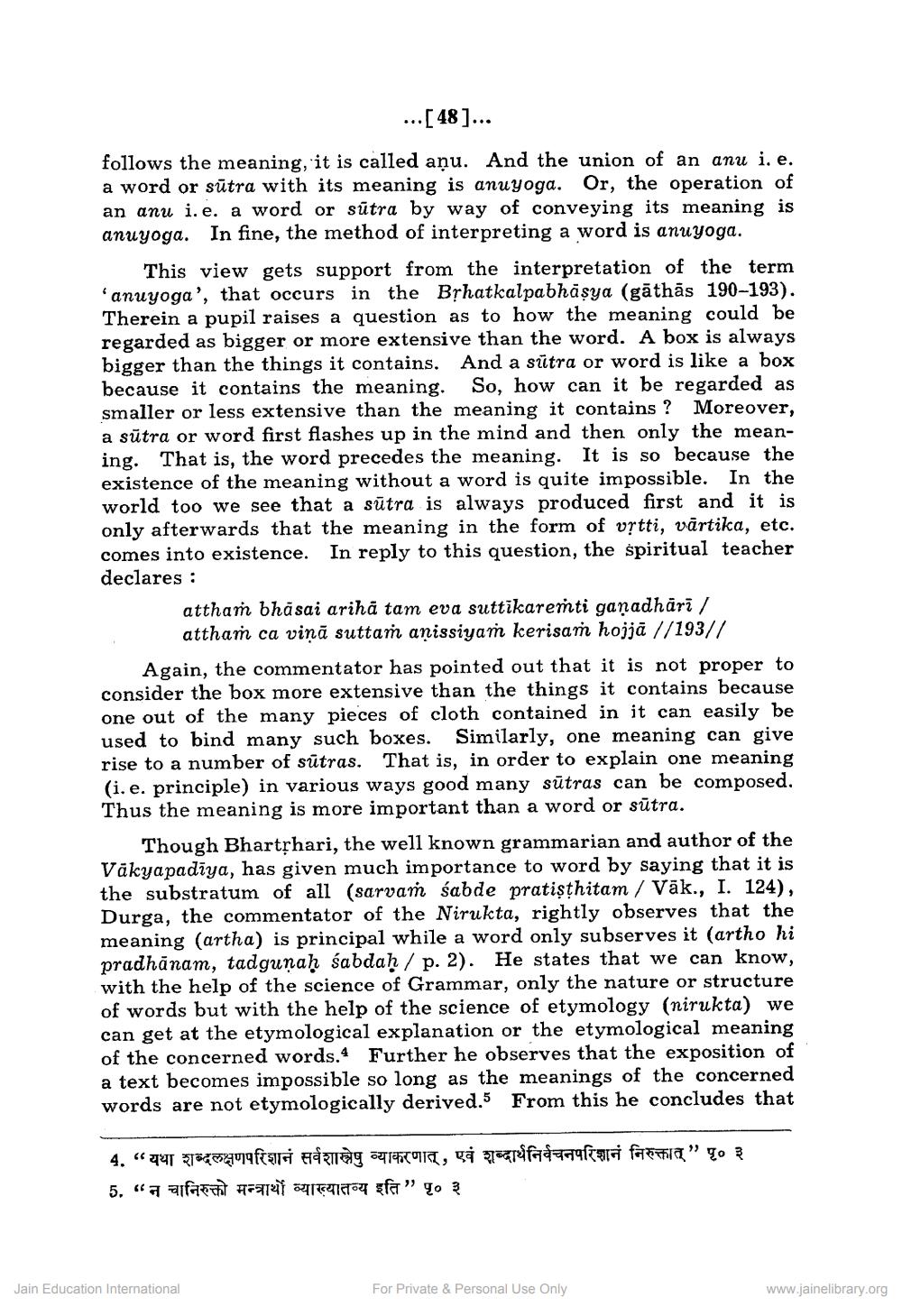________________
... [ 48 ]...
follows the meaning, it is called aņu. And the union of an anu i. e. a word or sūtra with its meaning is anuyoga. Or, the operation of an anu i.e. a word or sūtra by way of conveying its meaning is anuyoga. In fine, the method of interpreting a word is anuyoga.
This view gets support from the interpretation of the term 'anuyoga', that occurs in the Bșhatkalpabhāsya (gāthās 190-193). Therein a pupil raises a question as to how the meaning could be regarded as bigger or more extensive than the word. A box is always bigger than the things it contains. And a sūtra or word is like a box because it contains the meaning. So, how can it be regarded as smaller or less extensive than the meaning it contains ? Moreover, a sūtra or word first flashes up in the mind and then only the meaning. That is, the word precedes the meaning. It is so because the existence of the meaning without a word is quite impossible. In the world too we see that a sūtra is always produced first and it is only afterwards that the meaning in the form of vịtti, vārtika, etc. comes into existence. In reply to this question, the spiritual teacher declares :
attham bhāsai arih, tam eva suttikaremti ganadhāri /
attham ca viņā suttam anissiyaṁ kerisaṁ hojjā //193// Again, the commentator has pointed out that it is not proper to consider the box more extensive than the things it contains because one out of the many pieces of cloth contained in it can easily be used to bind many such boxes. Similarly, one meaning can give rise to a number of sūtras. That is, in order to explain one meaning (i.e. principle) in various ways good many sūtras can be composed. Thus the meaning is more important than a word or sūtra.
Though Bhartrhari, the well known grammarian and author of the Vakyapadiya, has given much importance to word by saying that it is the substratum of all (sarvam sabde pratisthitam / Vāk., I. 124), Durga, the commentator of the Nirukta, rightly observes that the meaning (artha) is principal while a word only subserves it (artho hi pradhānam, tadguṇaḥ śabdah / p. 2). He states that we can know, with the help of the science of Grammar, only the nature or structure of words but with the help of the science of etymology (nirukta) we can get at the etymological explanation or the etymological meaning of the concerned words. Further he observes that the exposition of a text becomes impossible so long as the meanings of the concerned words are not etymologically derived. From this he concludes that
4. “441 T ufari heg ut, va alfa9fti
fig" To B 5. “न चानिरुक्तो मन्त्रार्थो व्याख्यातव्य इति" पृ० ३
Jain Education International
For Private & Personal Use Only
www.jainelibrary.org




